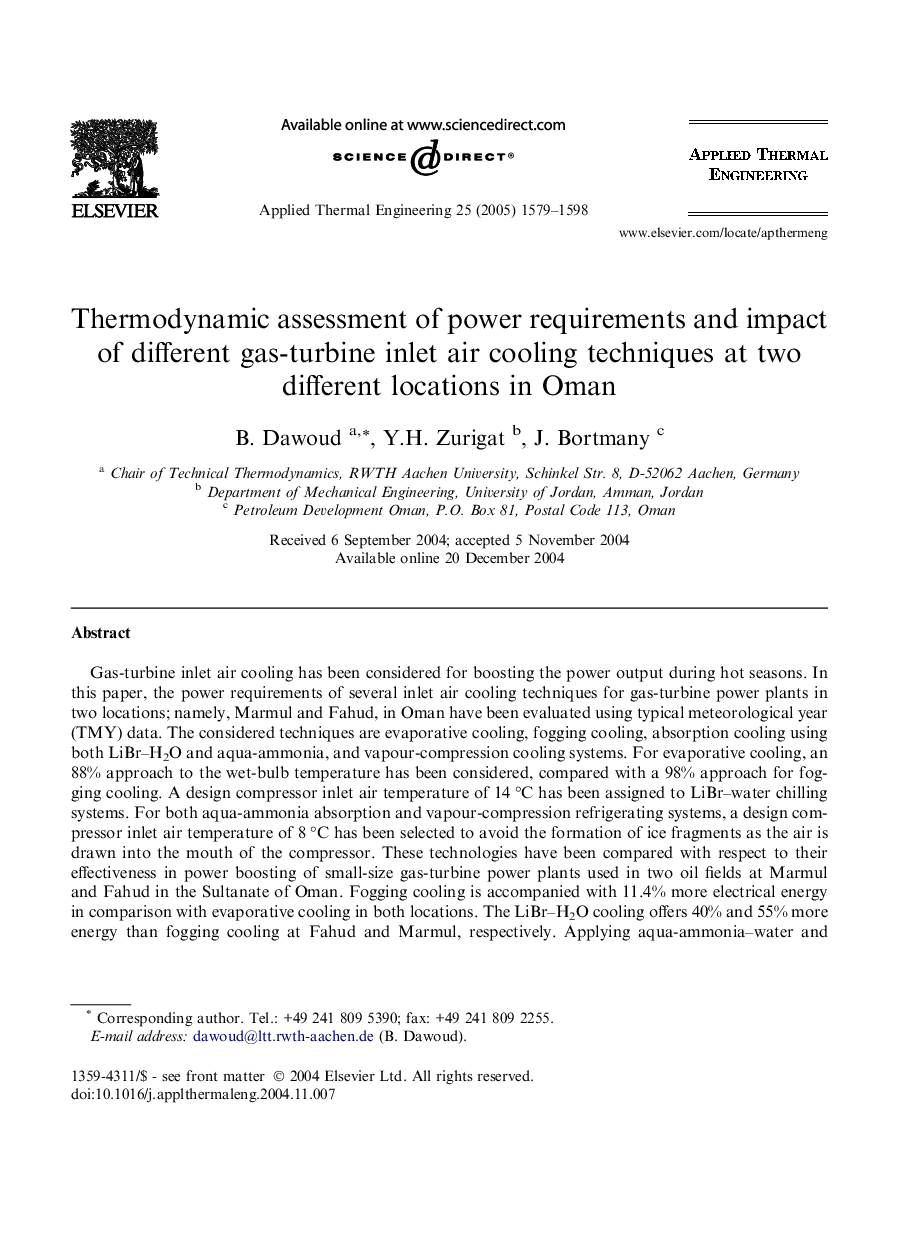| Article ID | Journal | Published Year | Pages | File Type |
|---|---|---|---|---|
| 9690294 | Applied Thermal Engineering | 2005 | 20 Pages |
Abstract
Gas-turbine inlet air cooling has been considered for boosting the power output during hot seasons. In this paper, the power requirements of several inlet air cooling techniques for gas-turbine power plants in two locations; namely, Marmul and Fahud, in Oman have been evaluated using typical meteorological year (TMY) data. The considered techniques are evaporative cooling, fogging cooling, absorption cooling using both LiBr-H2O and aqua-ammonia, and vapour-compression cooling systems. For evaporative cooling, an 88% approach to the wet-bulb temperature has been considered, compared with a 98% approach for fogging cooling. A design compressor inlet air temperature of 14 °C has been assigned to LiBr-water chilling systems. For both aqua-ammonia absorption and vapour-compression refrigerating systems, a design compressor inlet air temperature of 8 °C has been selected to avoid the formation of ice fragments as the air is drawn into the mouth of the compressor. These technologies have been compared with respect to their effectiveness in power boosting of small-size gas-turbine power plants used in two oil fields at Marmul and Fahud in the Sultanate of Oman. Fogging cooling is accompanied with 11.4% more electrical energy in comparison with evaporative cooling in both locations. The LiBr-H2O cooling offers 40% and 55% more energy than fogging cooling at Fahud and Marmul, respectively. Applying aqua-ammonia-water and vapour-compression cooling, a further annual energy production enhancement of 39% and 46% is expected in comparison with LiBr-H2O cooling at Fahud and Marmul, respectively.
Keywords
Related Topics
Physical Sciences and Engineering
Chemical Engineering
Fluid Flow and Transfer Processes
Authors
B. Dawoud, Y.H. Zurigat, J. Bortmany,
